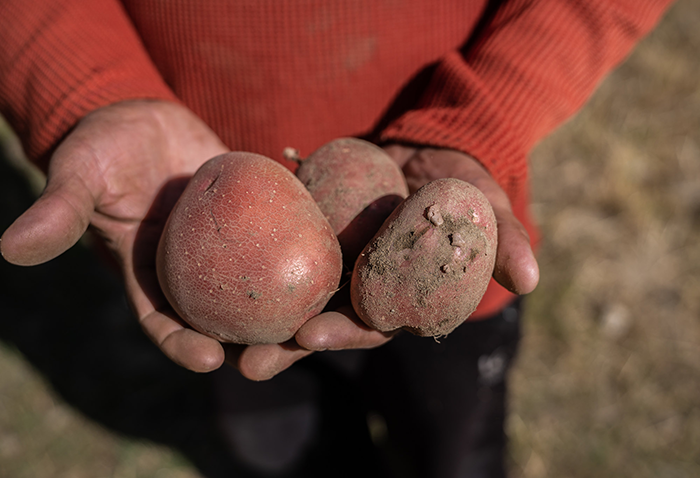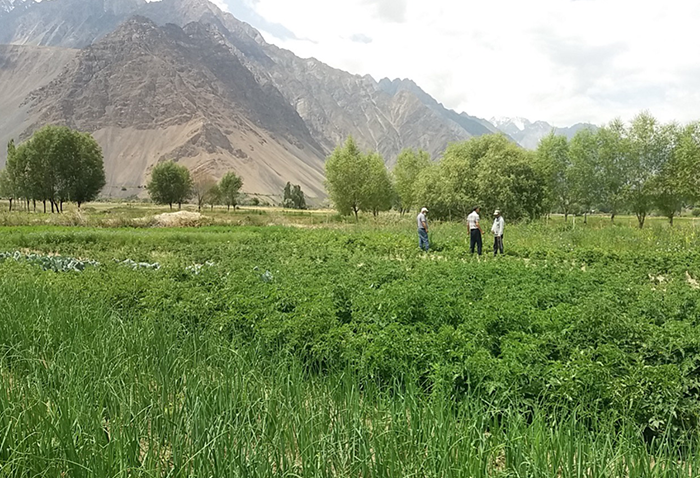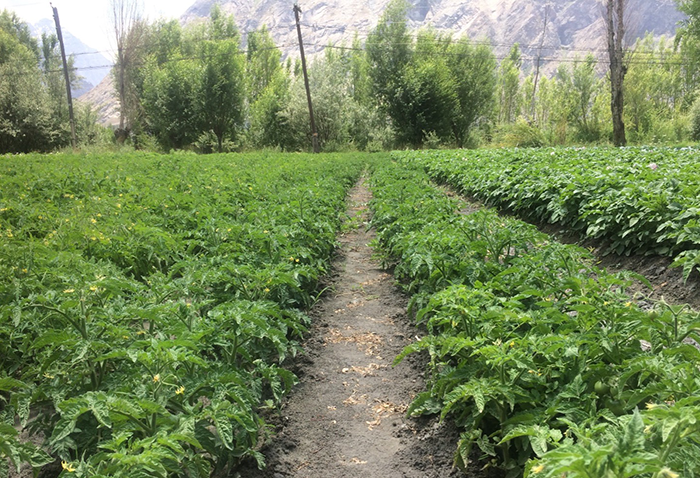For generations, residents of the Derzud and Barzud villages have dreamed of having a good irrigation system.
Derzud and Barzud are in the Rushan district of Gorno-Badakhshan Autonomous Oblast (GBAO) in Tajikistan. In many parts of this mountainous region agriculture is difficult due to limited arable land and a short growing season.
In comparison to other districts in the area, Rushan has extensive land rich in fertile soil. Derzud and Barzud have historically grown vegetables for the local market.
However, recent weather events have changed that.
Gulayoz Niyozov, head of the agriculture department in Rushan, describes the impact of earthquakes and mudslides in the district. “Natural hazards… have considerably damaged the physical infracture of irrigation systems, as well as the soil structure,” he said. This has left much of the land without access to sufficient irrigation water and in need of a drainage system.
Dreaming of Using the Land to its Full Potential
Derzud and Barzud previously had an irrigation system, but it was insufficient during the summer and fall because of water loss caused by an old canal in disrepair. The system also provided water on a schedule, so that some households could only access water once every two weeks.
Because of the shortage of irrigation water, many families have left the villages and resettled in new areas over the past few decades.
Despite the lack of water, most of the remaining households still farm as their primary livelihood. They grow winter wheat, legumes, barley, and vegetables like potatoes and corn. However, the farmers have only been able to fully cultivate 50 to 55% of the arable land, and sometimes face low yields and poor crop quality. This left households able to produce and sell only 110 to 220 pounds of vegetables and other crops each season.

“For years, people have dreamed about when they will be able to utilize the full potential of the lands to make good returns on vegetable growing,” said Qalandarov Yoriding, leader of the village organization.
“Today, the situation is completely different, and we are celebrating this change.”
Increasing Land Production, Living More Hopeful
In 2020, the Aga Khan Foundation (AKF) constructed a 7,100 meter aqueduct covering Derzud and Barzud.
The system provides 494 households – approximately 80% of the total population in the two villages – with access to sufficient irrigation water to cultivate all the arable lands to their full potential. In total, 250 hectares of land are expected to receive water, including a new 35-hectare orchard and 40 hectares of new land that will be put into agricultural circulation.
The irrigation system was constructed with the support of the Thrive Tajikistan: Partnership for Socio-Economic Development program, a partnership between AKF and United States Agency for International Development (USAID), and the Mountain Food Security and Nutrition project, funded by His Highness the Aga Khan.
The households of Derzud and Berzud funded more than 40% of the irrigation system through cash and in-kind contributions, including providing all the physical labor for the reservoir construction, pipeline installation, and trench digging.

Farmers talk in a field in Rushan

Crops grow in a field in Rushan
The irrigation system is being managed by the Obi Nur water user association, which was established in 2010.
With the new irrigation system and access to sufficient water, local farmers will be able to double their yield, generate a more stable income from sales, and store their surplus crops in the wintertime.
“Joining efforts, skills, and resources, we built this system and immediately increased the productivity of the lands,” said Bakhtibekov Mohir, head of the Obi Nur water user association. “This year, through the end of September, each household was able to supply the Khorog market with 100 to 200 kilograms [220 to 440 pounds], on average, of vegetables each week.”